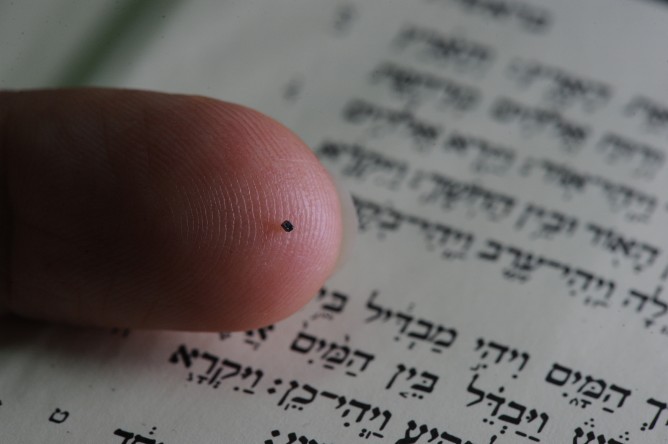And Then There Was Nano: The Smallest Bible in the World, opened last week at the Shrine of the Book, the architecturally iconic home of the Dead Sea Scrolls on the campus of The Israel Museum in Jerusalem.
The exhibition, launched in honor of the museum’s 50th anniversary, allows the public its first look at the world’s smallest version of the Hebrew Bible, created at the Technion-Israel Institute of Technology. The Nano Bible serves as a contemporary complement to the Dead Sea Scrolls, the oldest biblical manuscripts in the world.
Also opened last week is The Architecture of the Shrine of the Book, devoted to the unique history and design of the expressionist-style building, designed by Frederic Kiesler and Armand Bartos.
Developed by the Russell Berrie Nanotechnology Institute at the Technion in Haifa, And Then There Was Nano showcases the process of making the world’s smallest Hebrew Bible, etched onto a gold-plated silicon microchip no larger than a grain of salt. The text can be read only with the help of a powerful microscope.
The first of two copies of the Nano Bible, made by Prof. Uri Sivan and Dr. Ohad Zohar at the Technion, was presented to Pope Benedict XVI during his visit to Israel in 2009.
“The Nano Bible exhibition is a fascinating confluence of history, culture, and cutting-edge science — where the Land of the Bible meets the Start-Up Nation,” said Technion President Prof. Peretz Lavie.
Fighting for Israel's truth
We cover what makes life in Israel so special — it's people. A non-profit organization, ISRAEL21c's team of journalists are committed to telling stories that humanize Israelis and show their positive impact on our world. You can bring these stories to life by making a donation of $6/month.










